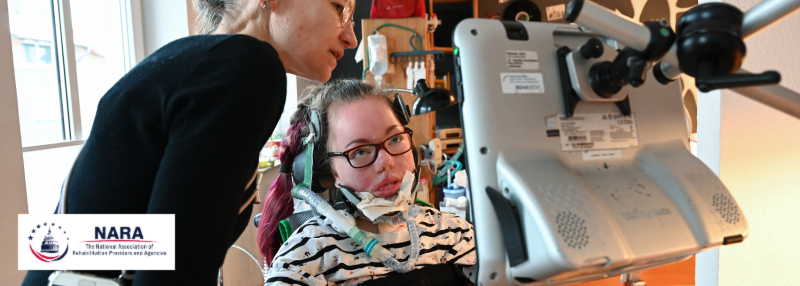Posted On: August 14, 2024 by NARA in: Occupational Therapy

August is Spinal Muscular Atrophy (SMA) Awareness Month, a time dedicated to raising awareness about this progressive neurodegenerative disease that affects motor nerve cells in the spinal cord, impacting muscles used for activities such as breathing, eating, crawling, and walking. Occupational Therapists (OTs) play a crucial role in supporting individuals with SMA, helping them achieve greater independence and improve their quality of life.
Understanding Spinal Muscular Atrophy
SMA is caused by a deficiency of a motor neuron protein called SMN, leading to the degeneration of motor neurons and muscle weakness. It affects individuals of all ages, from infants to adults, and can vary in severity. While there is no cure for SMA, there are treatments available that can help manage symptoms and improve function.
The Role of Occupational Therapists
Occupational Therapists are essential in the multidisciplinary care team for individuals with SMA. They focus on enhancing the patient’s ability to perform daily activities and participate in meaningful occupations. Here are some ways OTs support individuals with SMA:
- Adaptive Equipment and Assistive Technology: OTs assess the need for and provide adaptive equipment and assistive technology to help individuals with SMA perform daily tasks more independently. This can include specialized seating, communication devices, and mobility aids.
- Environmental Modifications: OTs work with families to modify home and school environments to ensure they are accessible and safe for individuals with SMA. This can involve installing ramps, adjusting furniture heights, and creating accessible workspaces.
- Strengthening and Stretching Exercises: To maintain muscle strength and flexibility, OTs design personalized exercise programs that include stretching and strengthening exercises. These programs help prevent contractures and improve overall mobility.
- Energy Conservation Techniques: OTs teach energy conservation techniques to help individuals with SMA manage fatigue and perform activities more efficiently. This includes planning and pacing activities, using adaptive equipment, and taking regular breaks.
- Support and Education: OTs provide education and support to individuals with SMA and their families, helping them understand the condition and how to manage it effectively. They also offer emotional support and connect families with community resources and support groups.
Raising Awareness and Advocacy
During SMA Awareness Month, it’s important to highlight the significant contributions of Occupational Therapists in the care and support of individuals with SMA. By raising awareness about the role of OTs, we can advocate for better access to occupational therapy services and support for those affected by SMA.
Get Involved
There are many ways to get involved in SMA Awareness Month. Consider participating in local events, sharing information on social media, or donating to organizations dedicated to SMA research and support. Together, we can make a difference in the lives of individuals with SMA and their families.

0 comments